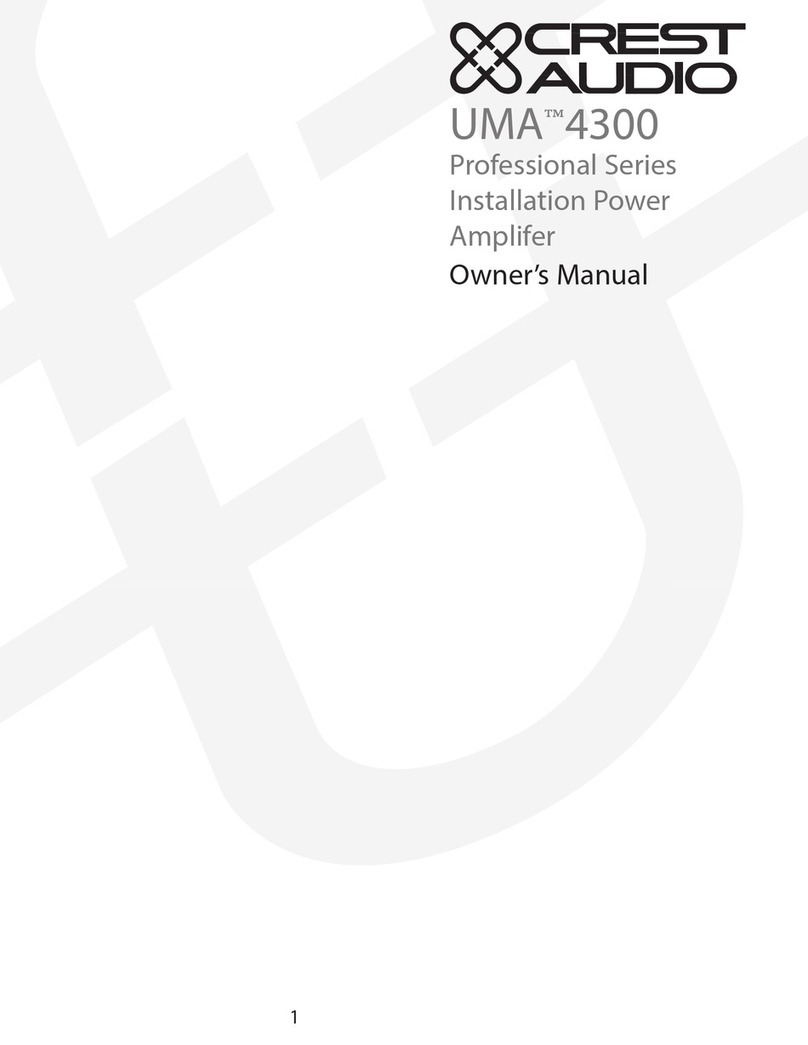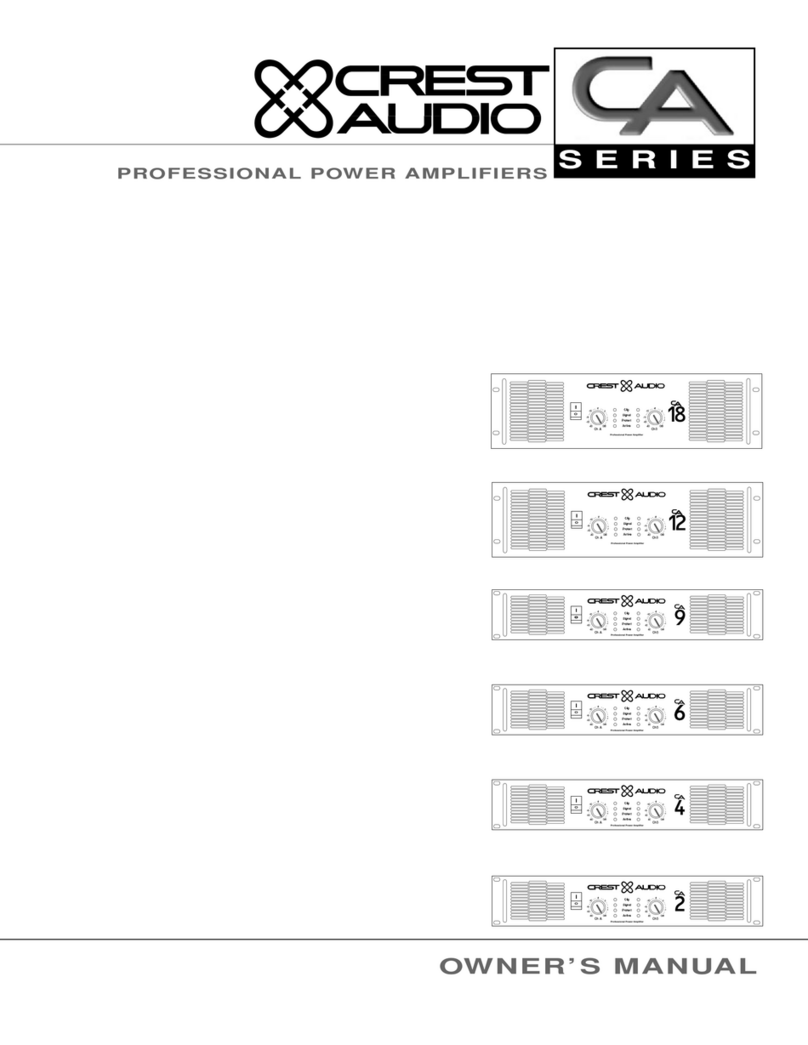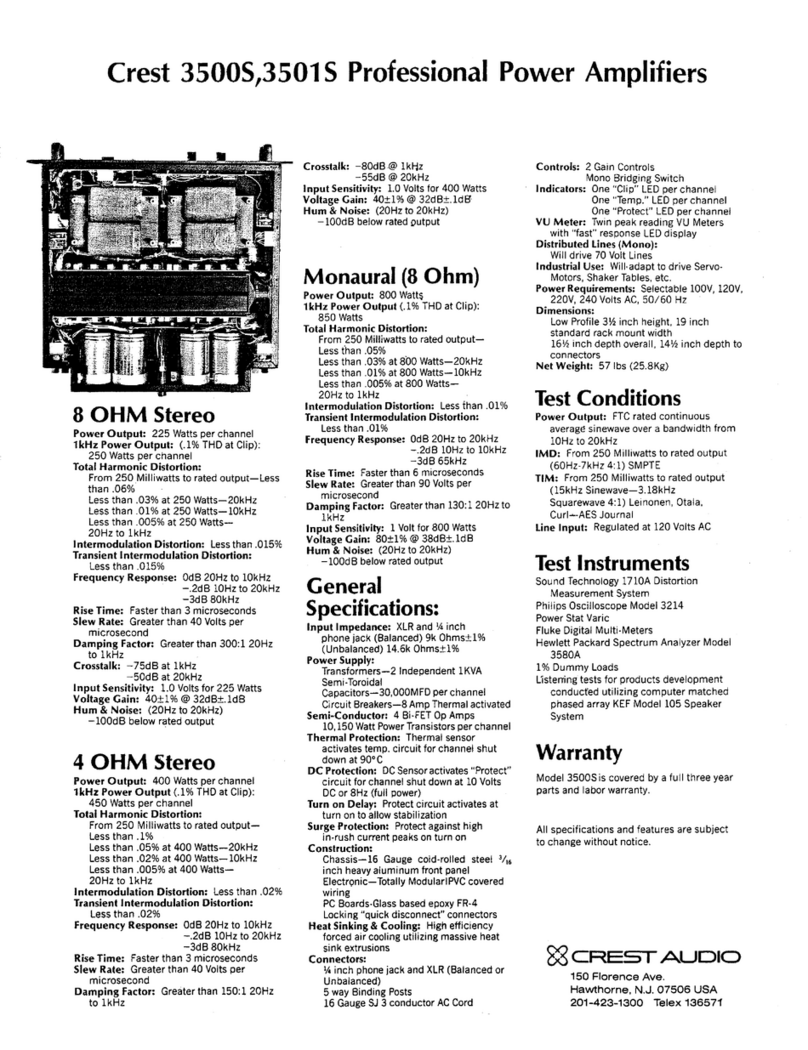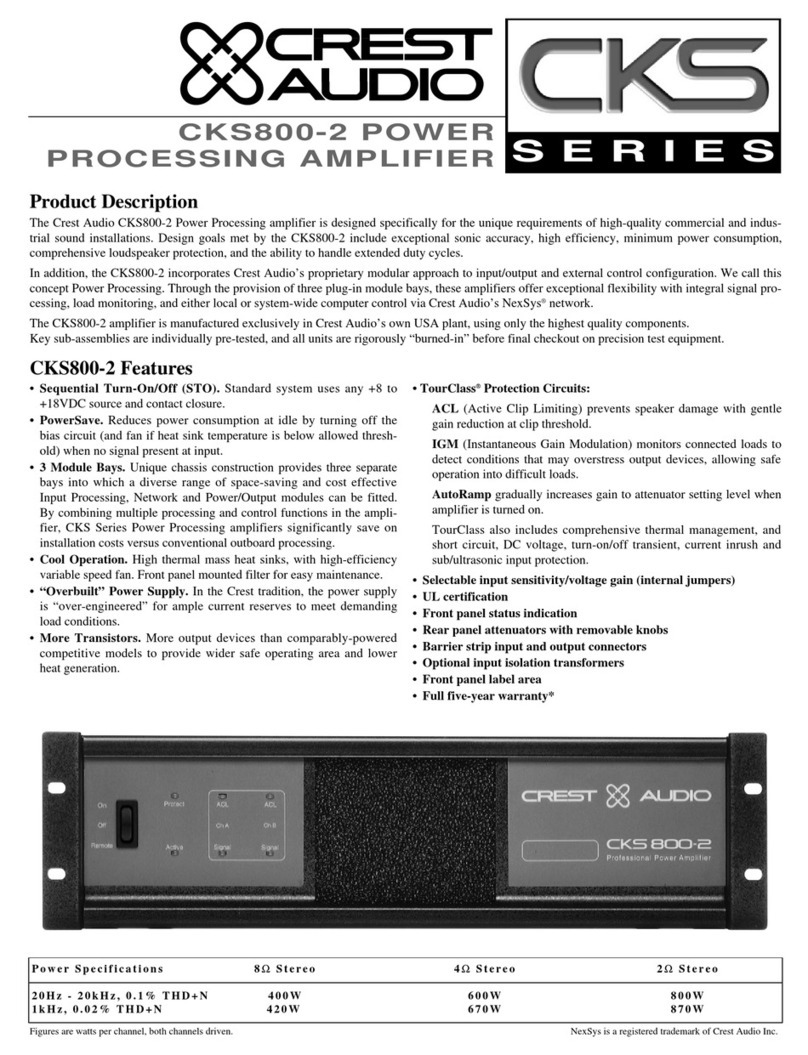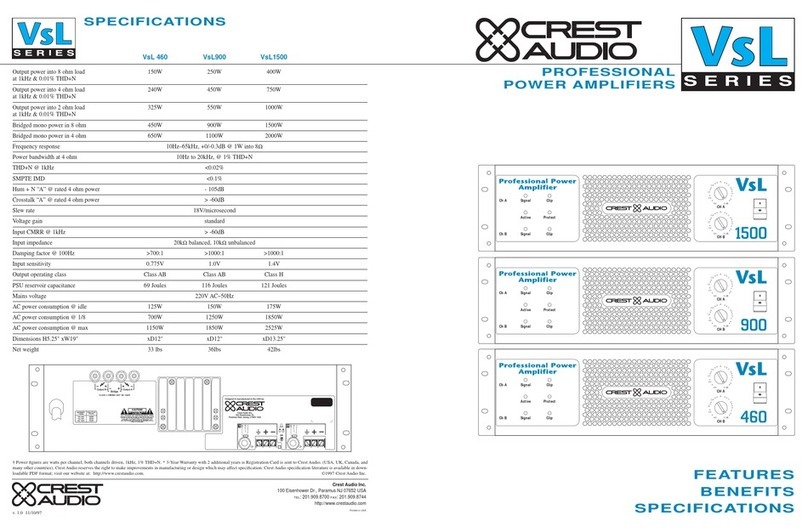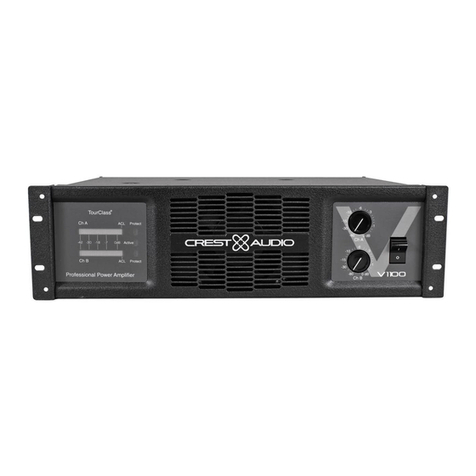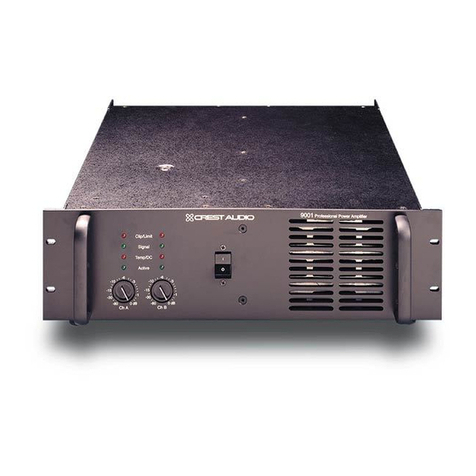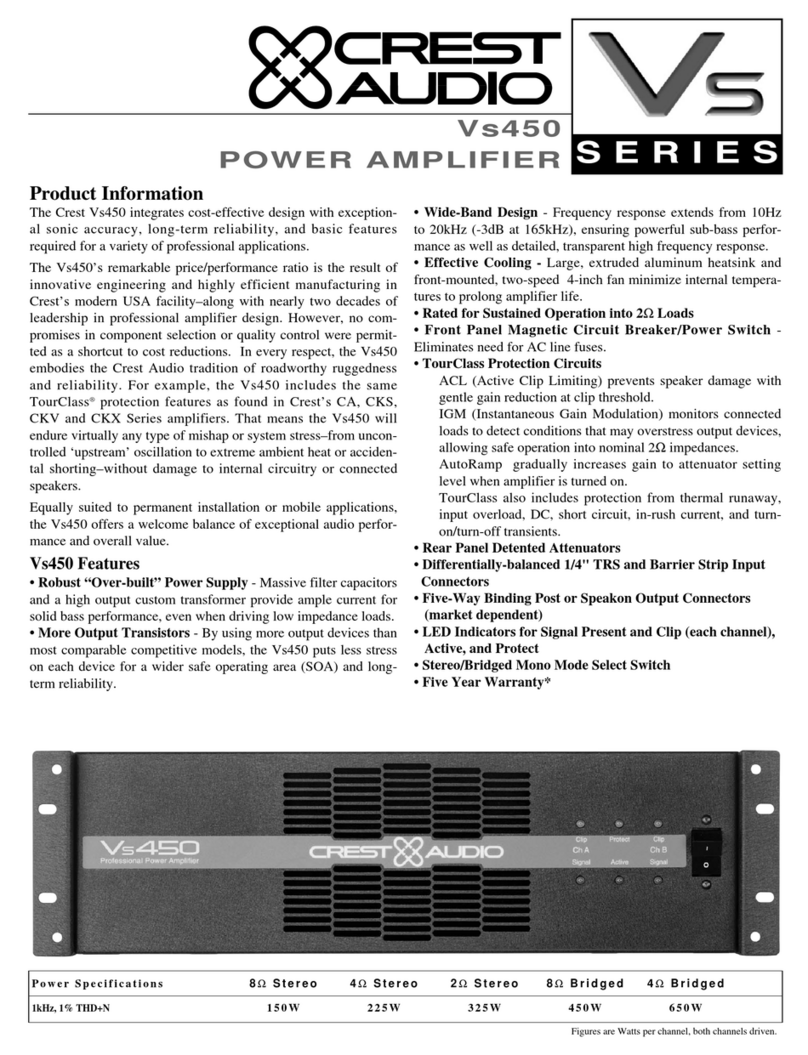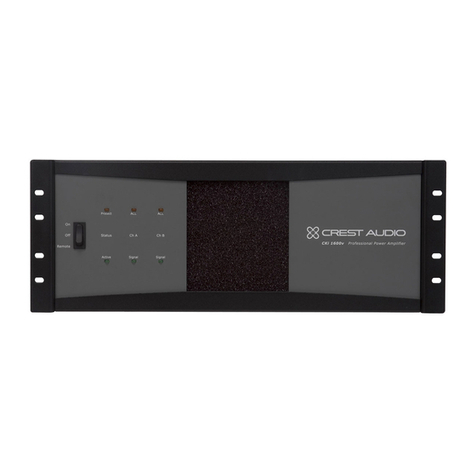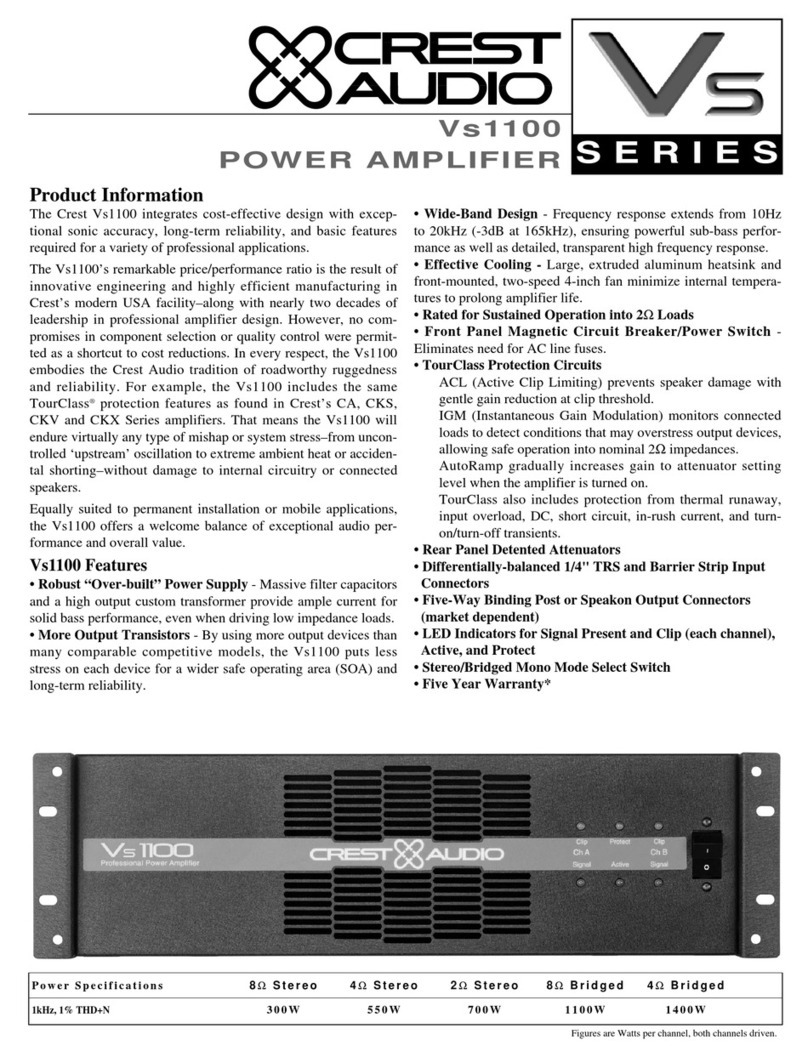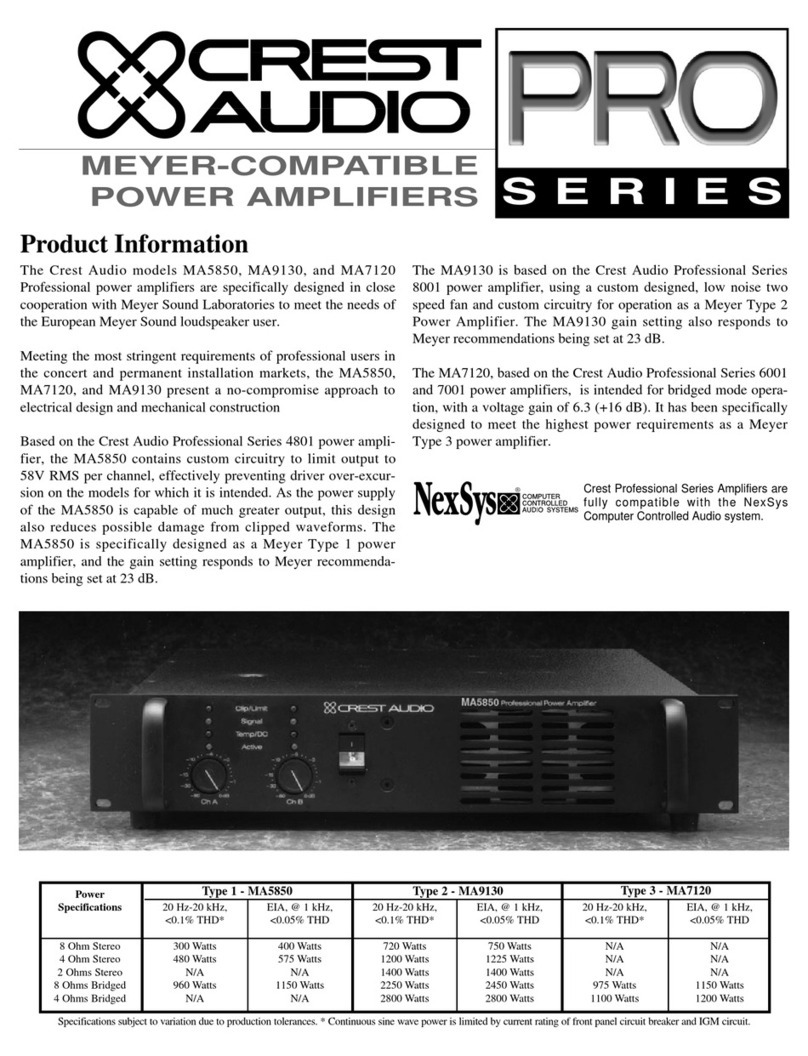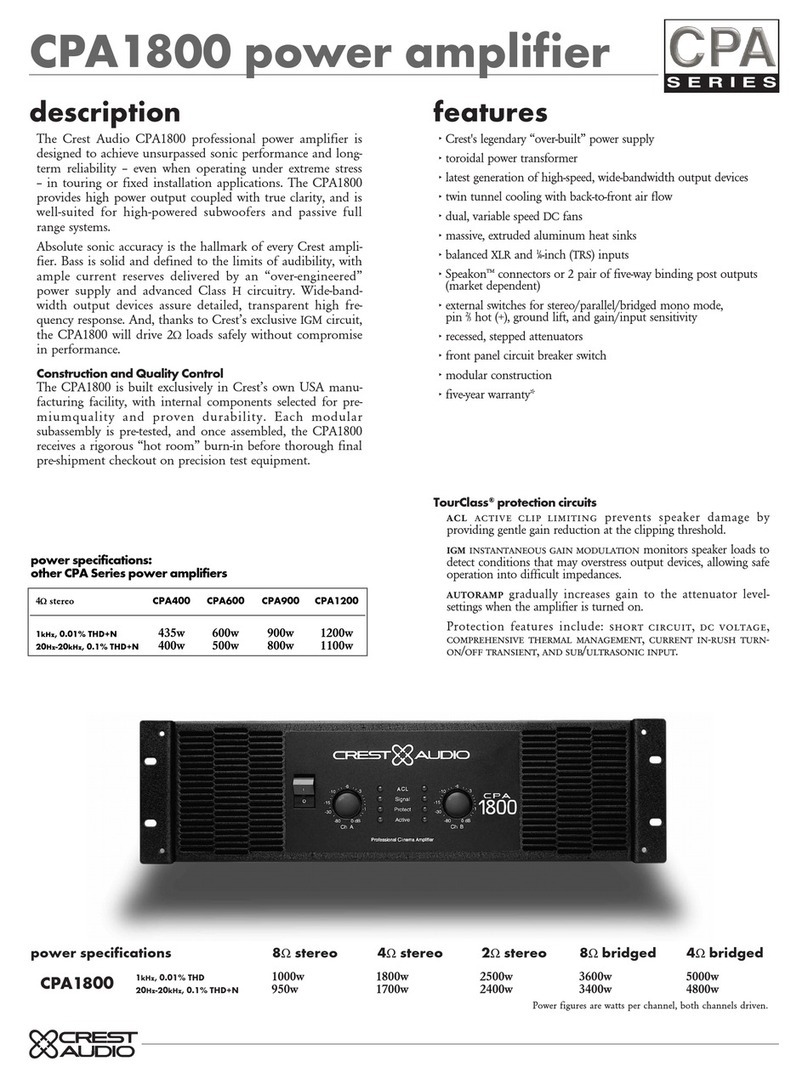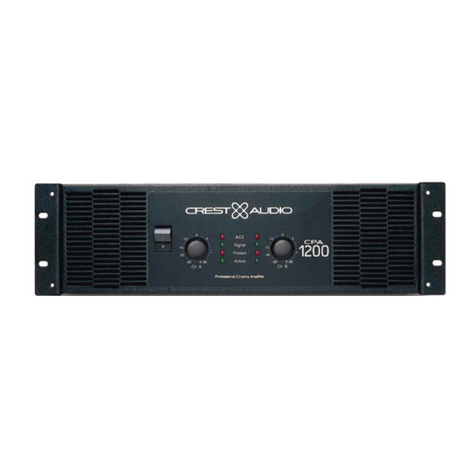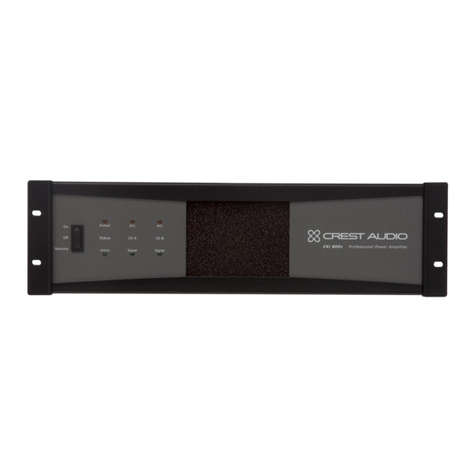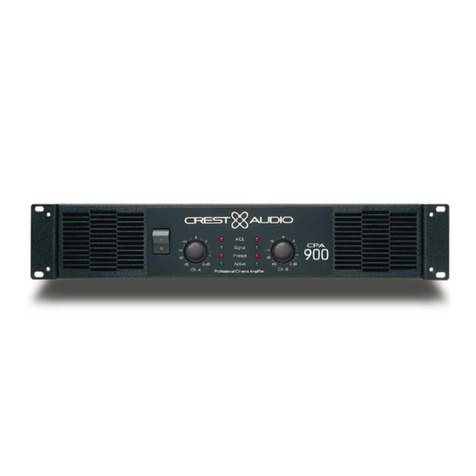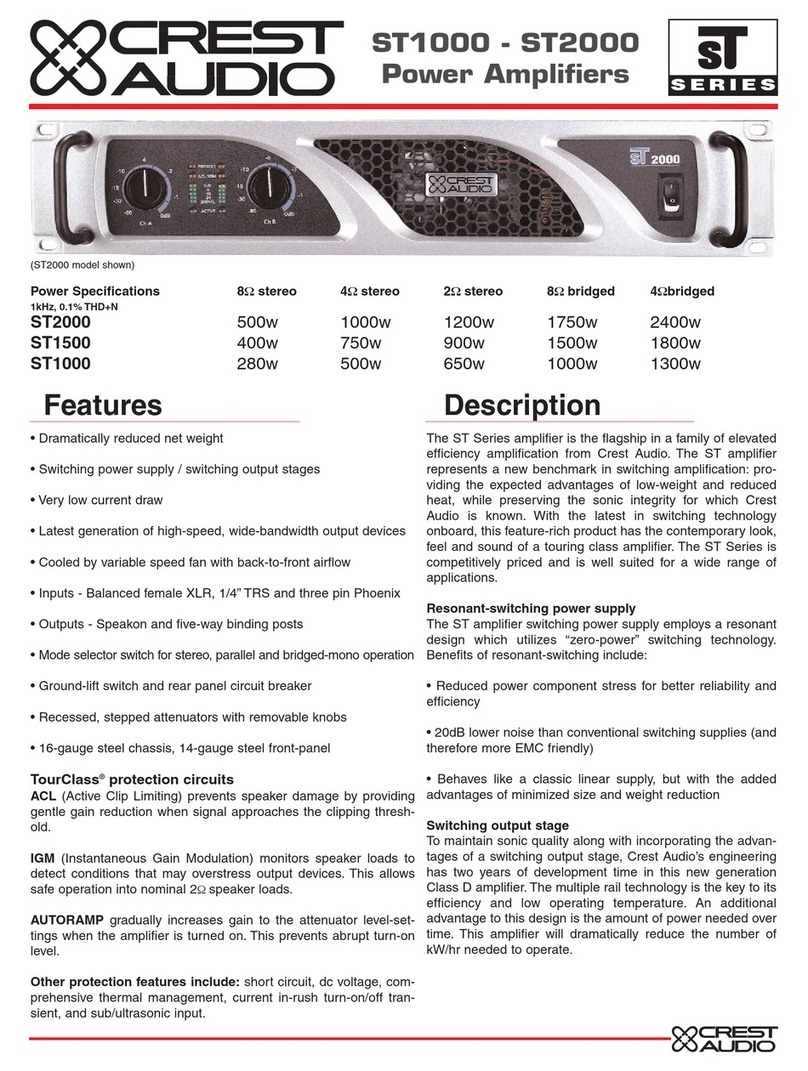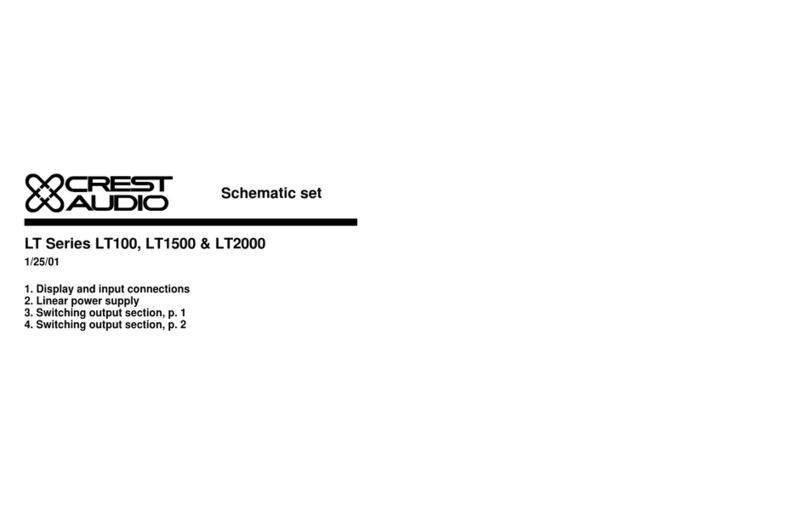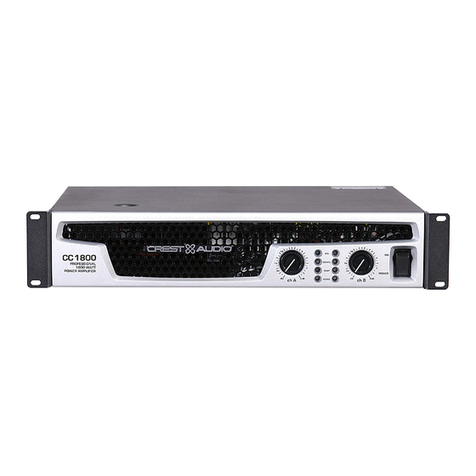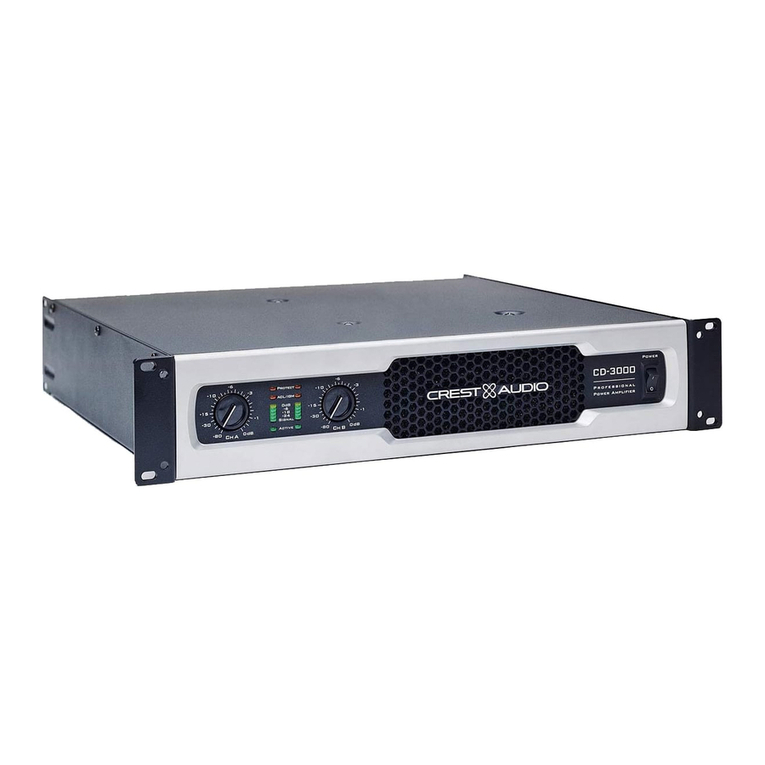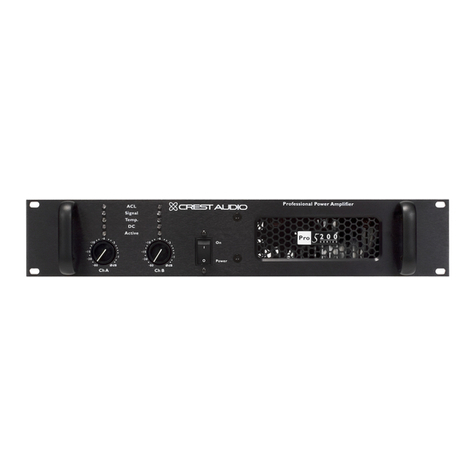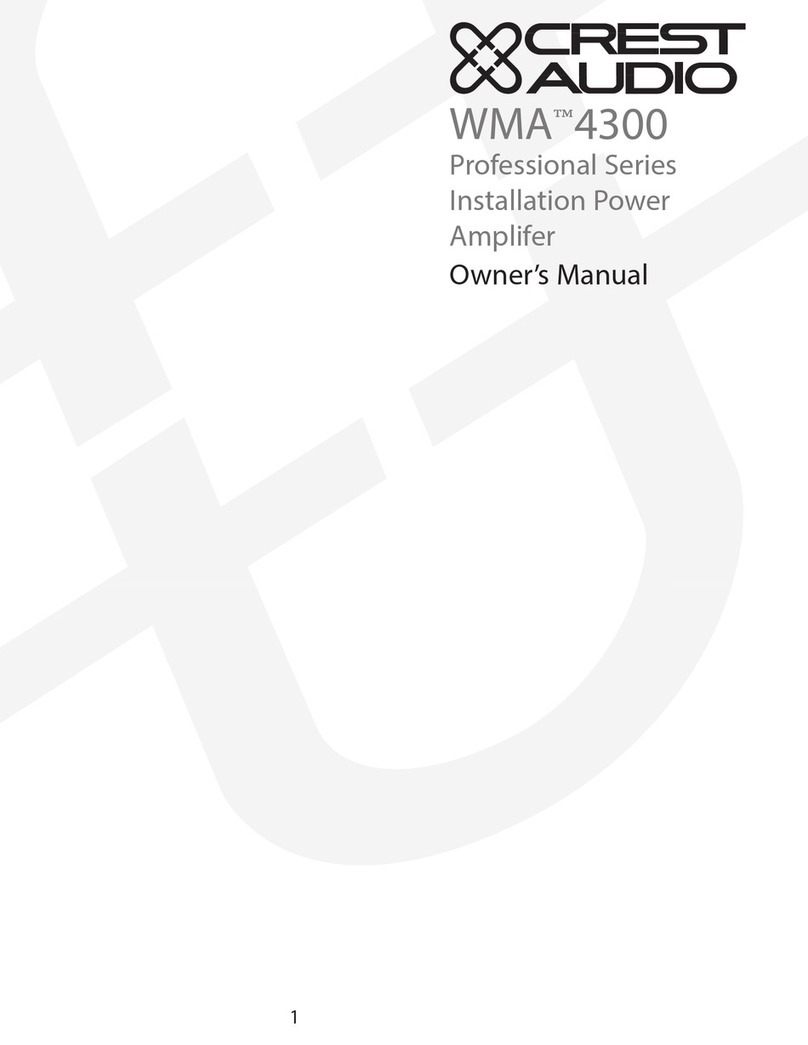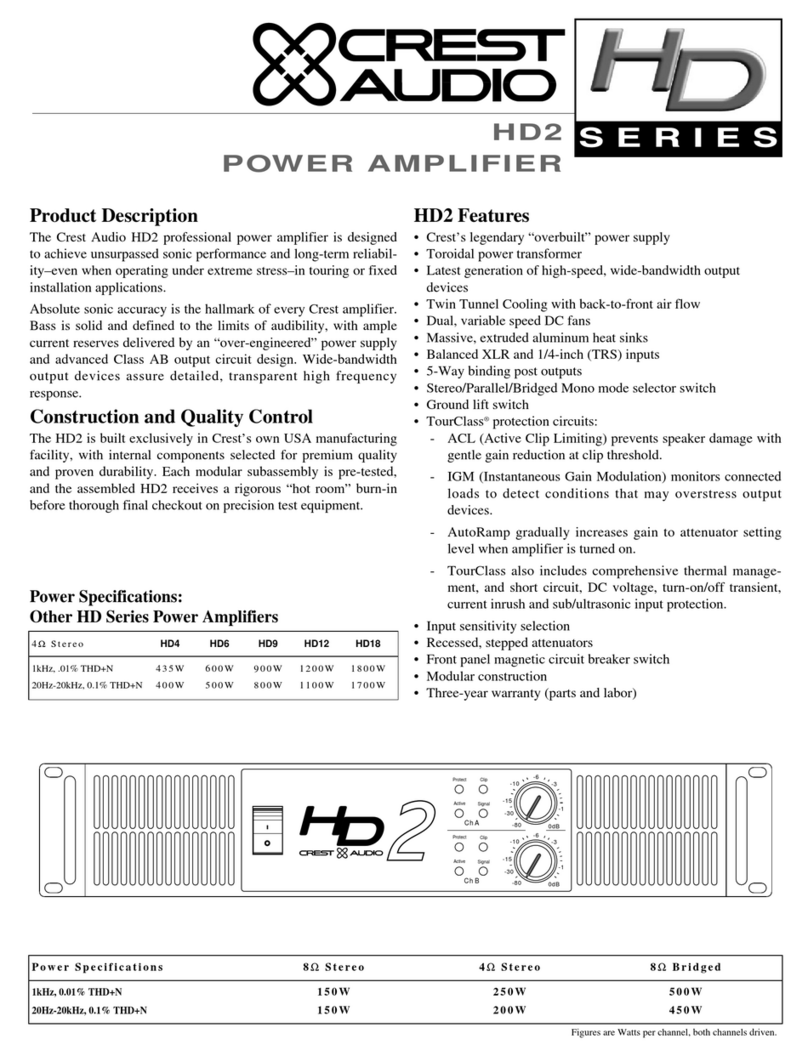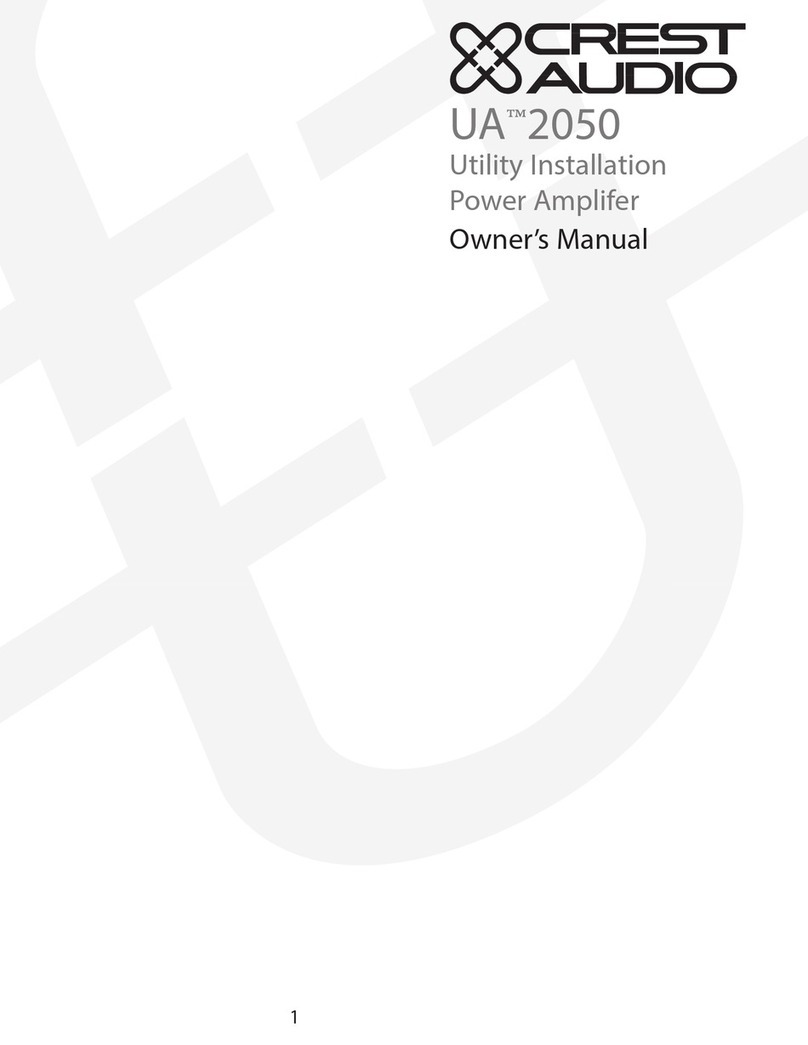
612
13
14
15
16
17
18
19
Rear Panel
pins 1+ and 2+ in parallel, and pins 1- and 2- in parallel. For the CHANNEL A and CHANNEL B twist locks, the respective channel
output appears on pins 1+ and 2+. Pins 1- and 2- are chassis ground. For the BRIDGE twist lock, CHANNEL A appears on pins 1+
and 2+, and CHANNEL B appears on pins 1- and 2-. Always check the twist lock connector wiring carefully before using.
MODE SWITCH
This switch is best changed when the amplifier is off. It is used to select STEREO or BRIDGE mode operation. It is a recessed
push-push type, requiring a small tool to activate. The IN position is BRIDGE mode; the OUT position is STEREO mode. Exercise
care when selecting the BRIDGE mode. Accidental selection of this mode could damage loudspeakers, particularly in bi-amped
systems. Amplifier BRIDGE mode theory will be covered later in this manual.
GCL (Gain Comparator Limiter) SWITCH
This switch is used to enable or defeat the GCL limiter circuitry. It is also a conventional push-push type, requiring a small "tool" to
activate. The IN position is DEFEAT; the OUT position is ENABLE. Normally, the GCL function should be enabled to minimize the
possibility of either or both channels going into clipping or overload. With this feature defeated, a severe overload could cause the
mains circuit breaker to trip. The Crest GCL limit-ing system will be covered in greater detail later in this manual.
FAN GRILLE
A two-speed DC fan supplies cool air to the amplifier. THIS INTAKE SHOULD NEVER BE BLOCKED! The fan switches to
high speed automatically when the unit requires additional cooling. At idle and cool, the fan runs at low speed. The fan should never
stop unless the amplifier is switched OFF or the AC mains power source is interrupted, or the thermal breaker in the transformer
has tripped due to excess heating. The thermal breaker in the transformer is self-resetting once the excess heat has dissipated.
INPUT BARRIER STRIP
A barrier strip is provided for input connections using bare wire or spade lug connections. CPX amplifiers employ low-noise,
electronically balanced input circuitry. This circuitry offers a very wide dynamic range capable of handling virtually any input signal
level, while providing excellent common mode rejection to minimize hum and reduce interference. This strip accepts balanced and
unbalanced audio signals. The "+" and "-" terminals are the positive and negative inputs to the respective channels. The GND
terminal is the common ground to both channel inputs. For use with an unbalanced source, connect the "-" input terminal of the
channel to ground with a jumper. If the "-" input is left floating, a 6 dB loss in channel gain will result and the floating input terminal
may pick up outside noise.
COMBO INPUT CONNECTOR
The combo connector offers both female XLR and 1/4" phone jack balanced inputs for each channel. The XLR is wired with pin 1
as ground, pin 2 positive input, and pin 3 negative input. The 1/4" phone jack is a tip/ring/sleeve (3-conductor) type, with the tip
being positive input, the ring negative input, and the sleeve ground. It is important to realize that the XLR, 1/4" jack, and barrier strip
inputs are all in parallel; therefore a balanced input to the associated channel can be accomplished using a male XLR, a
3-conductor phone jack, or bare wires connected to the barrier strip.
As an alternative, the 1/4" input can also be used with a regular tip/sleeve (2-conductor) type plug commonly found on
single-conductor shielded patch cords. In this case, the input becomes unbalanced, with the tip as positive input, and the sleeve
ground (the ring being grounded by the sleeve of the plug).
40 Hz SWITCH
This switch is used to activate the high-pass filter for the corresponding channel. It is again a push-push type switch, requiring a
small tool to activate. The IN position routes the input signals through the 40 Hz high-pass filter, while the OUT position bypasses
the filter. This filter cuts extremely low frequencies, protecting speakers from over-excursion. The filter low-frequency rolloff is 12 dB
per octave. The high-pass filter for each channel will function independently of the crossover function to be discussed next.
CROSSOVER SWITCH (150 Hz XOVER)
This switch is used to activate the 150 Hz crossover for the corresponding channel. It is also a push-push type switch and requires
a small tool to activate. The CPX offers two 150 Hz crossovers. These are designed for use when a subwoofer is added to the
system.
With the switch IN, the input signals are routed through the crossover, and the low frequencies are automatically sent to the
corresponding channel. At the same time, the high frequencies are sent to the HIGH OUT (20) jack and must then be patched to an
INPUT of the other channel of this amplifier or to another amplifier input to complete the bi-amped system. Additionally, the low
frequencies are sent to the THRU/LOW OUT (19) jack, and can be patched to other amplifier inputs to permit even larger systems.
With the switch OUT the crossover is defeated, and the input signal is routed to the line level THRU output jack. The crossover
frequency is fixed at 150 Hz and cannot be changed. The crossover configuration is a 4th order Linkwitz-Riley approximation.
THRU/LOW OUT JACKS
As per previous crossover discussion, this 1/4" jack supplies low-frequency out signals from the activated crossover for patching to
additional power amplifier inputs, providing added flexibility in larger bi-amped systems. When the crossover function is not
activated, this jack converts to a THRU function, where the output of the electronically balanced input circuitry is supplied to this
jack. The THRU function provides the means to patch a full range input signal to the other input of this amplifier (parallel mode), or
to other amp inputs in the same rack. This function allows one balanced mixer feed to be connected to the amp via the desired
balanced input connector (XLR, 1/4", Barrier), and then further distributed locally. Regardless of the crossover switch position, this
1/4" jack provides an impedance balanced (TRS) output. Although 2-conductor balanced (TRS) cables will provide better noise
immunity, single conductor shielded (tip/sleeve) cables can also be used.
